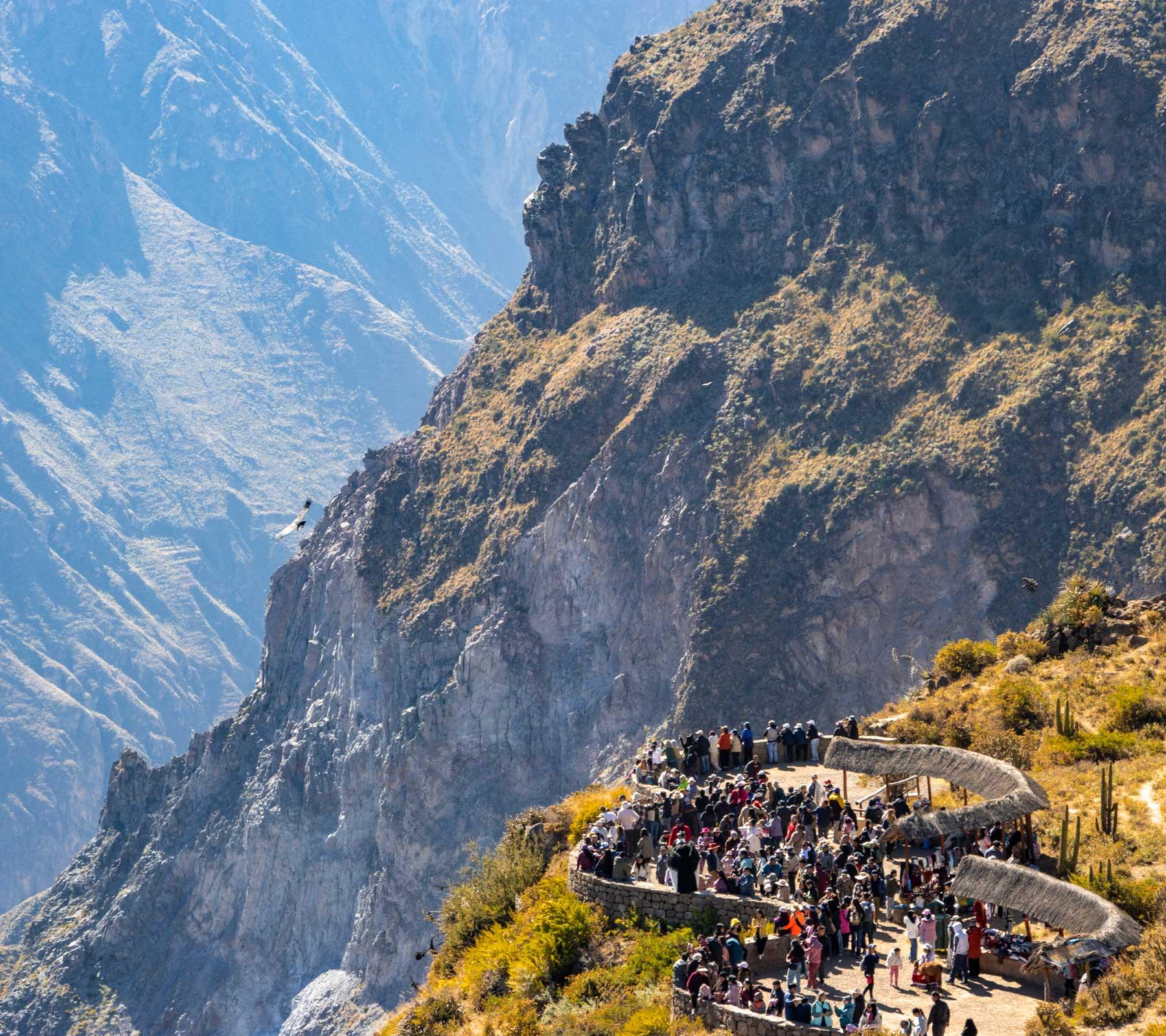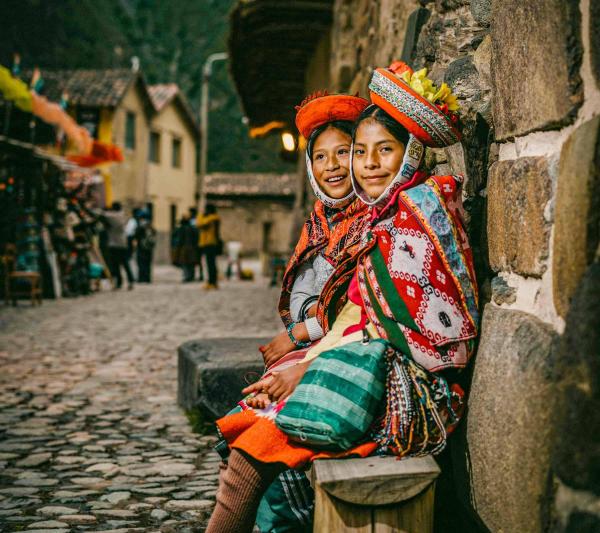Colca Canyon: Discover the Deepest Canyon in Peru
Colca Canyon, one of the world's deepest, plunges to a staggering 3,400 meters and stretches 100 kilometers. Nestled four hours north of Arequipa, this awe-inspiring natural wonder has been shaped by geological forces and human ingenuity over millennia. Nearly 2,000 years ago, the Collagua and Cabana peoples settled in the valley and crafted an intricate system of agricultural terraces that still adorn the canyon walls today. The terraces were designed to capture meltwater from nearby snow-capped volcanoes, showcasing their advanced farming techniques in challenging environments. The remains of ancient grain storage structures, known as colcas, further attest to their presence and agricultural prowess.
When the Spanish conquistadors arrived, they forced the indigenous farmers to work in mines under harsh labor conditions. The Collagua were also resettled into 14 villages, each centered around a main square and a colonial church, blending their ancestral culture with new colonial influences.
The Colca Canyon surpasses the Grand Canyon in the United States in both size and depth. The route to this natural wonder winds through the Salinas and Aguada Blanca National Reserves, where visitors can spot Andean camelids, such as vicunas and alpacas, as well as other native species.
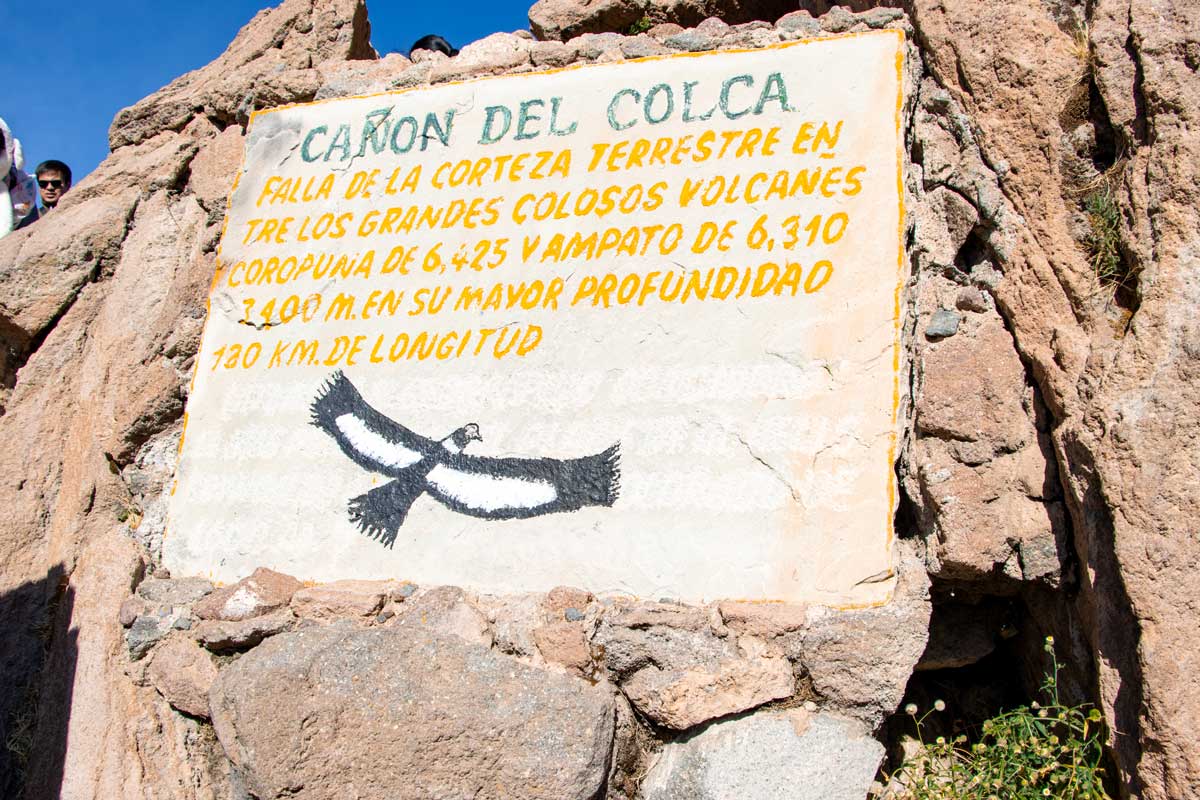
The Colca Canyon has become a premier tourist destination in Arequipa, drawing adventurers and nature lovers alike. Visitors can embark on a two-day tour that takes them to Chivay, a key stop in the valley. There, visitors can relax in the thermal baths of La Calera, enjoy freshly caught trout, and immerse themselves in the local culture.
Thrill-seekers will enjoy the Colca River's turbulent rapids, which offer an exhilarating challenge for canoeing and kayaking. The valley's diverse climate, ranging from cold in the higher elevations to semi-tropical in the lower regions, supports an impressive variety of wildlife, including over 20 species of cacti and 170 species of birds. The most iconic of these is the Andean condor, whose majestic wingspan makes it the largest flying bird on the planet. The best place to witness the condor's graceful flight is from the Cruz del Cóndor lookout. There, you can see the birds soar against the backdrop of the Ampato, Coropuna, and Mismi peaks.
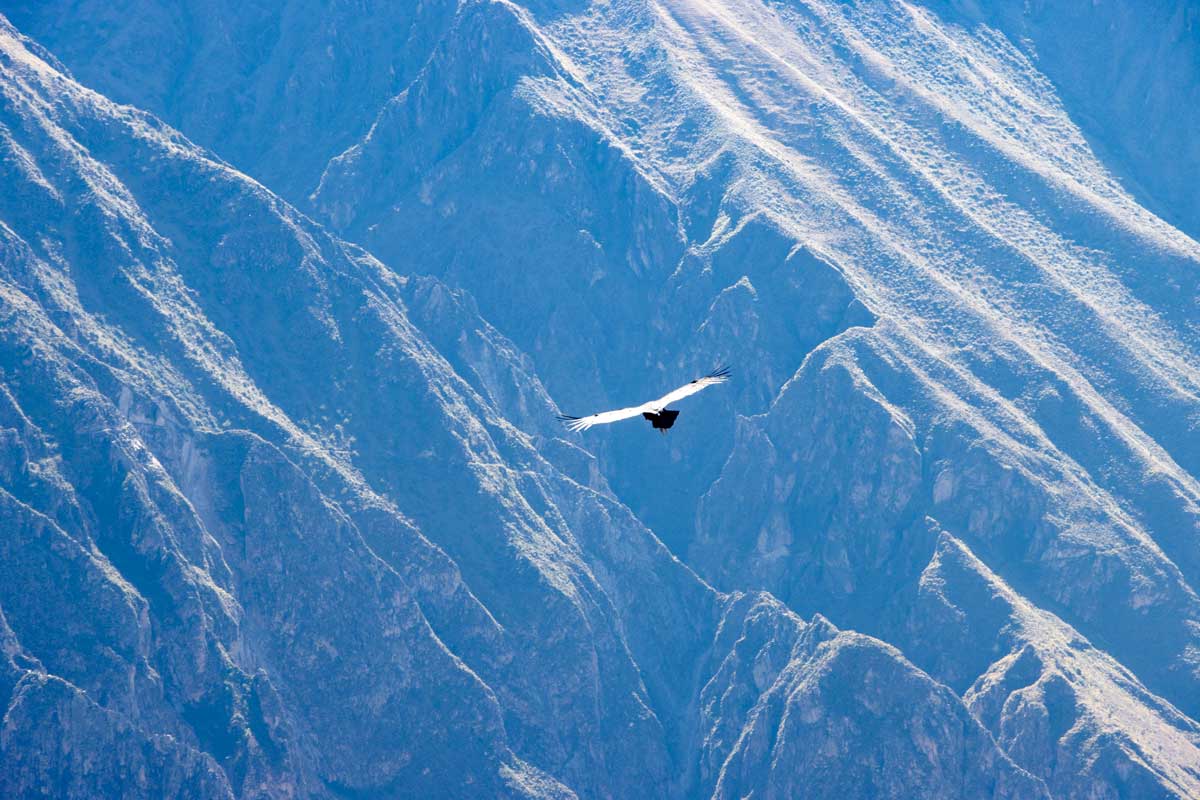
In addition to its natural beauty, the Colca Valley boasts a rich cultural heritage. The local villages, adorned with colonial churches, host traditional festivals that celebrate their unique blend of Andean and Spanish influences. The Colca artisans are renowned for their vibrant embroidery, intricate tinwork, candle making, and woodcarving, all of which reflect the valley's enduring cultural legacy.
Whether you're captivated by its breathtaking landscapes, intrigued by its ancient history, or drawn to its vibrant culture, the Colca Canyon offers an unforgettable experience that transcends time.
Where is the Colca Canyon located?
The Colca Canyon is located in southern Peru, in the Arequipa region. It lies approximately 160 kilometers (about 100 miles) northwest of Arequipa, the regional capital. Situated in the Andes mountain range, the canyon boasts some of the most dramatic and picturesque landscapes in Peru. The Colca River winds through the canyon, which is surrounded by towering peaks, including the Misti, Ampato, and Sabancaya volcanoes.
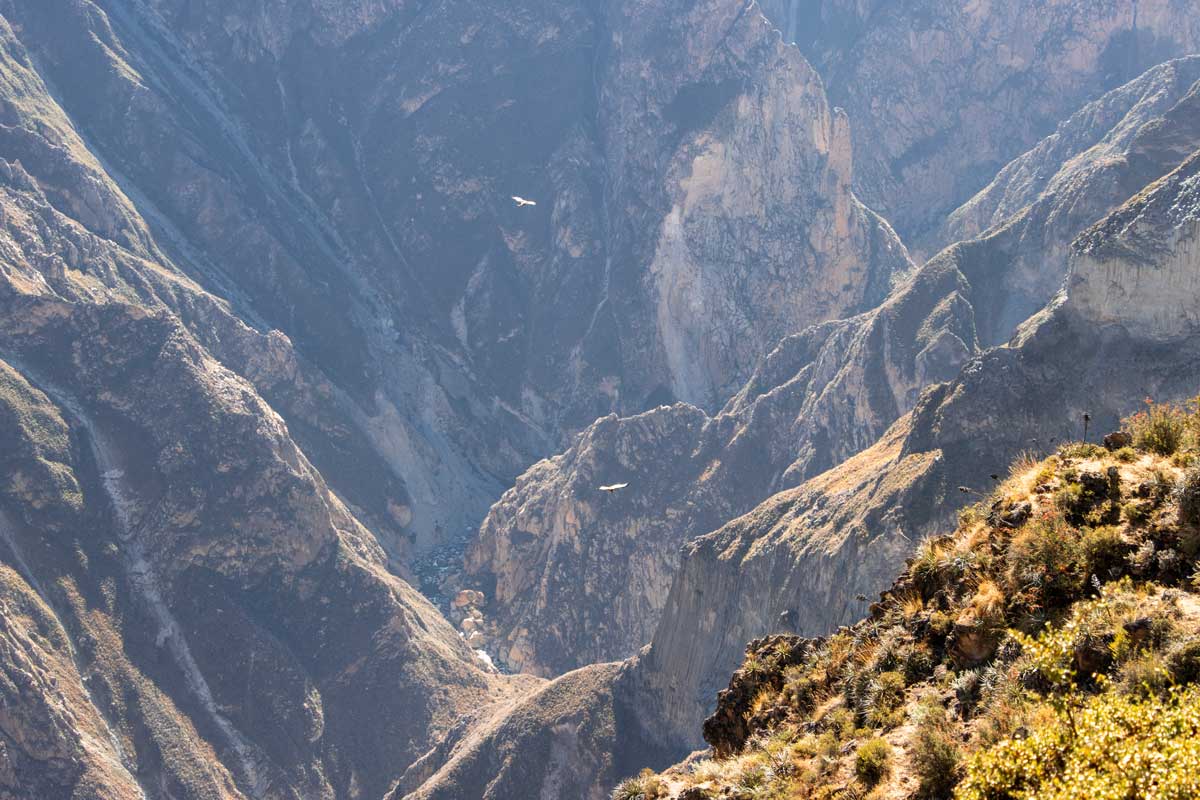
At its deepest point, the canyon reaches approximately 11,155 feet (3,400 meters), making it one of the deepest in the world. The canyon is also part of the larger Colca Valley, a region known for its stunning terraced landscapes, traditional villages, and rich cultural heritage. The area is easily accessible from Arequipa by road. The journey offers breathtaking views of the high Andes, grazing llamas and alpacas, and the occasional glimpse of snow-capped volcanoes. Due to its location within the Andes, the canyon is at the heart of Peru's natural and cultural diversity, making it a must-visit destination for travelers exploring the region.
